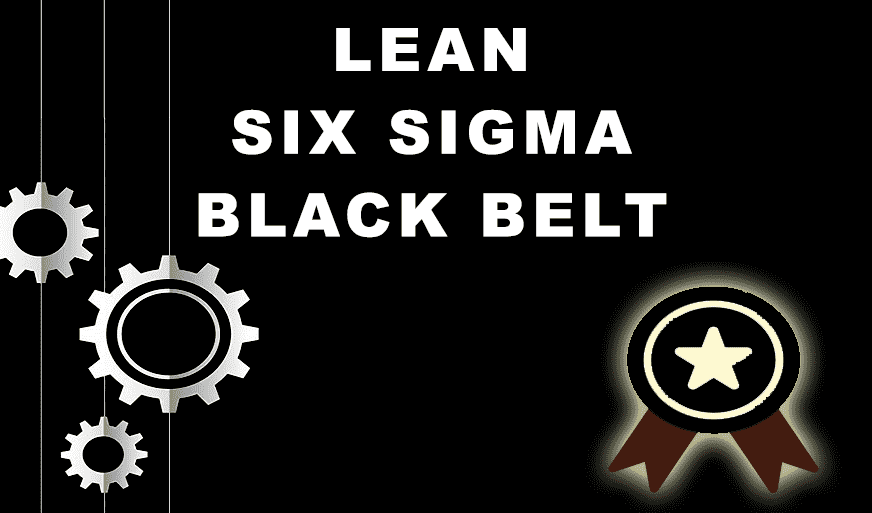Six Sigma Yellow Belt Certification - Six Sigma for Beginners
-
 By Akhil Issac
By Akhil Issac - Published on Aug 10 2022

What is a Lean Six Sigma Yellow Belt?
In the world of fast-growing technologies, it becomes difficult to stay ahead of your competitors. The only way to ensure continuous success is by making sure that your projects have the least errors and defects.
Errors and defects in a projected increase the number of risks that the project might have. The greater the risk, the more the chances of failure. To eliminate these risks from projects and make them error-free, companies use the principle of Six Sigma.
Six Sigma is a revolutionary method used by major companies to improve the quality of their products and make them error-free. When you eliminate errors from a project, you increase its chances of becoming successful. Moreover, a successful project needs an efficient project manager.
Project managers have an important role to play in a project as they determine how successful the project will be. Every project manager needs some certification that will validate their skills.
Lean Six Sigma certifications are one such certification that validates the skills of professionals and makes them better equipped to handle projects.
Why should you consider a Lean Six Sigma certificate?
- You will become a valuable asset to whichever company you join. As a result, you can be sure that your job will never be in danger. Professionals having Six Sigma certifications are 70% more likely to retain their jobs than people with no certifications.
- You will assist your team in managing projects. You will become a key part of the project execution process.
- Having a Lean Six Sigma certificate under your belt will increase your chances of getting a promotion. If you obtain a Six Sigma certification, you will be able to handle your projects more efficiently. Thus, promotions will be inevitable. Also, it will increase your bonuses and help you earn more.
- You will obtain a specialization in your area of work. A Six Sigma certificate enables you to be more efficient in your work as you will learn about all the latest skills in your industry. It will help you stay ahead of your competitors.
- You will learn while you work. Six Sigma is an adaptable strategy and lets people learn in a flexible way. It will expand your insight and lead to the growth of your experience.
Lean Six Sigma Yellow Belt Training Requirements
As the Lean Six Sigma yellow belt is the most basic certification, you need basic experience and knowledge. After getting the Lean Six Sigma yellow belt certification, you will be able to assist many project managers in handling important project works.
You might not directly work for the project, but you will be associated with the fundamental processes of the project. The main objective of companies while executing any project is making sure that the products are of good quality.
If they maintain the quality during the process, naturally, the products will be good. Therefore, most companies pay attention to the project execution process and make sure that there are no defects in it.
Six sigma planning doesn't have a prerequisite for which the candidate would be equipped for Six Sigma yellow belt certification. You just need to know about the basic Six Sigma methodologies and how to apply them in a project.
While the specialists who are starting at now qualified with the minimal level of Six Sigma yellow belt accreditation and are deciding to procure the green belt, these specialists require work experience of 3 years.
Get Training for Six Sigma Yellow Belt Certification
Principles of Lean Six Sigma
1) Eliminating wastage:
This is one of Lean Six Sigma principles vast properties and hopes to make affiliations monetarily reliable while diminishing the expense of creation. Taking out wastage saves resources and decreases costs.
You can get out wastage by observing the region that hasn't been adding to the project’s profits.
2) Reducing plan:
This is huge as it will direct the fundamental profits with no deviation from the result. Keeping up quality is an important part of project management as it will ensure that there are no deviations from your original plan in Lean Six Sigma principles.
3) Making the strategy smoother:
You can keep a tab on every procedure of your project. Constant monitoring will help you smoothen the entire process and regulate the work properly. Therefore, there have been many instances in the past when companies neglected the strategy and followed a random path.
Moreover, making strategies is not enough. You need to make sure that there are no loopholes in it by using Lean Six Sigma principles.
4) Greater obligation:
Lean Six Sigma principles require you to give equal importance to everyone. All the members of a project play an important role. Moreover, be it the customers, the project heads, employees, stakeholders, or the assistants. Therefore, everyone’s contribution matters, so you must take their opinions into account.
5) Focusing on intentional improvement:
The strategy for progress in Lean Six Sigma principles follows a persistent methodology with the target that the end result will have the least amount of defects. Moreover, you need to improvise continuously and eliminate defects from the process with Lean Six Sigma principles.
Who should get the Six Sigma yellow belt?
If you are excited about understanding the Six Sigma yellow belt fundamental thoughts, you can apply for this certification. Moreover, resulting in becoming more acquainted with the fundamental norms of the Six Sigma Yellow Belt.
Therefore, you will have the choice to help the more extraordinary level specialists.
Therefore, there are no necessities for the Six Sigma yellow belt certification. There are various Six Sigma certifying bodies. In the meanwhile, all of them have an arrangement or test framework, and after the practical completion of the tests, you will be able to get the certification.
Six Sigma Yellow Belt Course Content
The Six Sigma Yellow Belt course will cover the basics of Six Sigma work. Here are the topics that you will learn as a part of the Six Sigma yellow belt training.
1) The irrefutable view of Six Sigma:
Here you will grasp the beginning stages of Lean Six Sigma and its essentialness in our endeavors. You will learn about how the concept of Lean Six Sigma came into existence. You will also learn about its various applications over the years.
2) The unique and effective DMAIC (Define, Measure, Analyze, Improve, and Control) system:
This glances at each letter, Define, Measure, Analyze, Improve, and Control. The best technique to utilize every one of them, despite what they offer to help the affiliation. Moreover, these are the setting up stones on which this methodology is assembled.
Therefore, this is a fundamental driver due to which Lean Six Sigma has needed to use this DMAIC structure altogether for successful endeavor fulfillment.
3) Understanding client requests:
Moreover, clients are the most important part of any project. Without your clients, your project will not be able to find success.
Therefore, this stage of the Lean Six Sigma yellow belt certification training teaches you how to process the client’s request. You will learn how to use the client’s request for the betterment of your project.
4) The combination and waste minimization measure:
You will learn about the various forms of waste and how to reduce them in a project. Therefore, this gathering also educates how to achieve customer commitment and satisfaction through providing quality things, while gathering their contributions about the items and their solicitations for the things.
Conclusion
The Lean Six Sigma yellow belt certification is a must-have certification if you want to have a successful career in project management. Therefore, working for the improvement of a project should be your essential perspective. Lean Six Sigma uses many best practices that will thoroughly restrict wastage and profoundly bring down the cost of the project.
To get Six Sigma Training and Earn a Six Sigma Certification, chat with our six sigma course expert
Suggested Six Sigma Courses:
Six Sigma Yellow Belt Certification
Subscribe to our Newsletters
Popular Programs
Trending Posts
Leadership vs Management - The Ultimate Guide
Last updated on May 9 2024
The Ultimate Guide to ISO 9001: Boosting Quality and Certification Success
Last updated on Jul 24 2024
Quality Assurance in Six Sigma Explained
Last updated on Feb 6 2023
Six Sigma Certifications - Reasons Why you Should Get Them
Last updated on Aug 18 2022
Implementing 5S Methodology for Better Work Efficiency
Last updated on Dec 4 2023
Total Quality Management (TQM) vs. Six Sigma
Last updated on Oct 10 2024
Categories
- Agile Management 54
- AI and Machine Learning 42
- Big Data 53
- Business Management 51
- Cloud Computing 44
- Digital Marketing 56
- Information Security 8
- IT Hardware and Networking 17
- IT Security 103
- IT Service Management 29
- Leadership and Management 1
- Microsoft Program 2
- Other 43
- Programming Language 31
- Project Management 162
- Quality Management 75
- Risk Management 8
- Workplace Skill Building 2
Trending Now
Top Career benefits of Lean Six Sigma Green Belt
ArticleLean methodology, Six Sigma methodology and Lean Six Sigma Explained
ArticleSix Sigma Black Belt Certification – Value and Career Benefits in 2024
ArticlePareto Chart in Six Sigma - Explained
ArticleQuality Management Interview Questions 2024
ArticleSix Sigma Certification Guide - A Professional's Guide
ArticleQuality Control Explained – Six Sigma
ArticleTotal Quality Management - A Complete Guide for Beginners
ArticleQuality Assurance in Six Sigma Explained
ArticleQuality Assurance vs Quality Control
ArticleSix Sigma Certification – Everything you Need to Know About Getting Certified
ArticleLean Six Sigma on Resume for Rewarding Career Benefits
ArticleQuality Manager Interview Questions and Answers for 2025
ebookService Delivery Manager Interview Questions and Answers (With Examples)
ArticleSix Sigma Interview Questions and Answers 2024
ArticleHow to become a Quality Analyst
ArticleA Supply Chain Management Guide to Mastering Logistics End to End
ArticleSenior Quality Manager Interview Questions and Answers 2024
ArticleTop 30 Quality Analyst Interview Questions and Answers 2025
ArticleFinancial Analyst Interview Questions and Answers 2024
ArticleRisk Manager Interview Questions and Answers 2024
ArticleCompliance Manager Interview Questions and Answers 2024
ArticleOperation Manager Interview Questions and Answers
Article5 Lean Continuous Improvement Principles to Supercharge Your Operations
ArticleHow to Become a Quality Manager - Career, Job Scope and Certifications
ArticleEssential Components of a Quality Management System
ArticleSix Sigma Certifications - Reasons Why you Should Get Them
ArticleTop Qualities of a Good Manager and a Leader
ArticleLearn about Statistical Process Control (SPC) and its top applications
ArticleCost of Poor Quality - A Detailed Guide
ArticleImplementing 5S Methodology for Better Work Efficiency
ArticleWhat Is Lean Management?
ArticleBest Six Sigma Books in 2024
ArticleLeadership vs Management - The Ultimate Guide
ArticleQuality Assurance Plan - Six Steps To Quality Assurance Plan
ArticleOperational Planning Creation, Key Elements and its Benefits
ArticleA Complete Guide to Product Life Cycle Stages 2025
ArticleSix Sigma tools for DMAIC Phases
ArticleWhat Is Lean Manufacturing?- An Overview
ArticleThe Lean Continuous Improvement Model: A Comprehensive Guide
ArticleDMAIC vs. DMADV: Key Differences and Choosing the Right Six Sigma Methodology
ArticleA Deep Dive into the Power of Lean Continuous Improvement Process
ArticleLean Continuous Improvement Methods for Business Excellence
ArticleIntroduction to Lean Manufacturing- Definitions, Framework, and More
ArticleUnderstanding the Key Principles of Lean Manufacturing
ArticleSecret to Unlock Organizational Excellence: Stages of Continuous Improvement
ArticleLean Continuous Improvement: A Detailed Guide to Mastering Organizational Quality
ArticleLean Waste Management: The Ultimate Guide 2023
ArticleA Deep Dive into Lean Continuous Improvement Tools
Article8 Wastes of Lean - Strategies for Identification and Elimination
ArticleThe Ultimate Guide to Lean Manufacturing
ArticleUnderstanding Lean Manufacturing's Pros and Cons
ArticleLean Waste Reduction Strategies: Boost Efficiency and Cut Costs
ArticleTop 10 Lean Manufacturing Tools for Optimal Productivity
ArticleBeyond the Basics: Benefits of Lean Continuous Improvement
ArticleWhat are Quality Standards? | A Guide to ISO Standards
Article7 Important Types of Quality Management System
ArticleA Comprehensive Guide to Quality Management Systems
ArticleISO 9001 Standard: Benefits and Certification
ArticleBenefits of QMS Certification for Your Business
ArticleStep-by-Step Implementation Guide to ISO 9001
ArticleThe Ultimate Guide to ISO 9001: Boosting Quality and Certification Success
ArticleQuality Management System – QSM Approaches and Methodologies
ArticleHow to Effectively Implement a Robust Quality Management System?
ArticleExplaining QMS Documentation Structure: Benefits and Best Practices
ArticleWho Needs ISO 9001 Certification and Why?
ArticleKey Elements of ISO 9001:2015 Quality Management System
ArticleOvercoming Common Challenges in ISO 9001 Certification: Tips and Best Practices
ArticleBest Quality Management Tools
ArticleTotal Quality Management (TQM) vs. Six Sigma
ArticleQuality Manager Salary: What Freshers & Experts Earn in 2025
ArticleCertified Scrum Product Owner: Job Roles And Responsibilities
ArticleTips for Continuous Integration Testing: Streamlining QA
Article10 Quality Management Strategies Adopted by Top Managers
Article
















